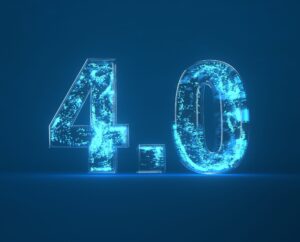In today’s world, data has become the cornerstone of industrial innovation. Among the numerous industries out there, the machining industry is no exception. With recent advancements in technology, data has now become more important than ever. Data standardization in machining is a pivotal concept that ensures seamless communication, accurate analysis, and informed decision-making throughout the manufacturing lifecycle. In this blog post, we will take a close look at the current state of data standardization in machining, highlighting the progress made, the challenges faced, and the unexplored frontiers that lie ahead.
Over the past decade, data standardization in machining has witnessed significant advancements, largely fueled by the rise of Industry 4.0 and the Industrial Internet of Things (IIoT). Current efforts towards data standardization in machining include the establishment of various standards such as ISO 13399, GTC, or DIN 4000. These standards define the parameters, specifications, and formats that need to be followed while exchanging data between different machines and systems.
The progress that has been made in data standardization in machining is encouraging, However, there is still a long way to go in achieving complete data standardization in the machining industry.
- Lack of Universal Standards and complexity: While there has been notable progress in establishing data formats and communication protocols, there is no universal standard that encompasses all aspects of machining data. This lack of a unified framework can lead to compatibility issues when integrating data from different sources. Furthermore, there are a number of industry standards for data standardization in machining, and despite addressing similar areas, they are not always compatible with each other. Switching from one to another can be time-consuming process, and thus makes it difficult for companies following competing standards to work together.
- Cost: Standardizing data can be a significant upfront investment, especially for large manufacturers. Many manufacturing facilities still rely on legacy equipment and systems that may not readily support modern data standardization practices. Integrating these systems into the standardized data ecosystem presents a challenge.
- Many manufacturers are not aware of the benefits of data standardization or the available standards. While there is a growing awareness of industry standards for data standardization in machining, there is still a need to improve adoption of these standards.
MachiningCloud has been on the forefront of data standardization since its inception. After implementing ISO 13399 as its main reference for data and in an effort to make standardization easier and more accessible, MachiningCloud created mapping between standards and established its own standardized data for items incompletely or not covered by standards. For instance, material classification has been a notorious challenge as many standards exists (ISO 513, VDI3323, CMC), and each manufacturer uses their preferred one; MachiningCloud uses a master table allowing its users to cross-reference those standards and navigate this complexity seamlessly. MachiningCloud has been working closely with its software partners and ISO committees to speed up adoption of data standardization. Moreover, continuous work with tool manufacturers and regular feedback on their data quality and points of improvement has been proven invaluable.
No standard is perfect but they are the bedrock of digitization and will help to drive innovation and improve the competitiveness of the manufacturing industry. With standardized data, manufacturers can improve the quality of their products, reduce manufacturing time and cost, and ultimately, make informed data-driven decisions. Data standardization in machining has come a long way, reshaping how manufacturers gather, analyze, and leverage data for improved outcomes. While significant strides have been made, it is essential to continue striving towards complete data standardization to fully realize the benefits of data in machining. The path forward involves a concerted effort from industry stakeholders to address these challenges and embrace new opportunities for innovation. As data standardization continues to unfold, it holds the promise of transforming machining into a highly efficient, connected, and intelligent process that defines the future of manufacturing.




